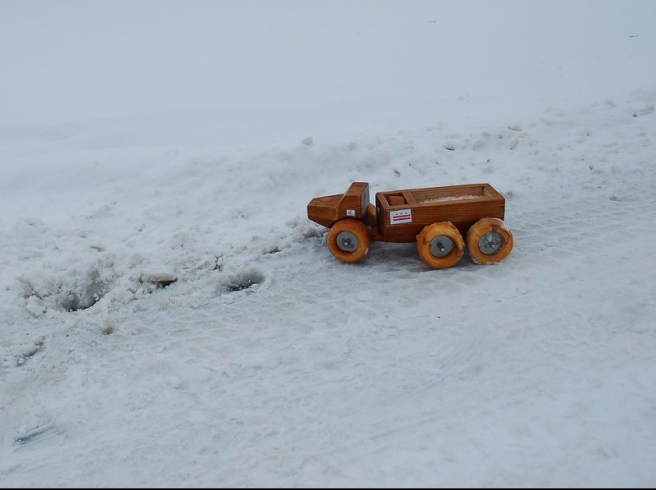
https://flic.kr/p/7CazLC
This morning, I woke up to the rumble of salt trucks and snow plows. Southeast Michigan is experiencing the first significant snowfall of the season this week. The mood is varied (depending on who you ask) with emotions of delight, annoyance and resigned acceptance (sometimes all mixed together).
While the kid part of my personality checks the school closings for a snow day first thing (810 today in Metro Detroit!), the grownup part (with the driver’s license) is very grateful for my car’s snow tires, the snow removal crews and copious amounts of rock salt sprinkled on the roads. Salt, when added to the wintry roads, keeps the slush and melted snow from re-freezing by depressing the freezing point of water. When salt molecules dissolve in a film of liquid water on top of ice, these dissolved substances alter the way that water molecules can line up to freeze. It takes a lower temperature to freeze water with stuff dissolved in it.
Much of the rock salt used this area is actually mined from salt deposits 1100 feet beneath Metro Detroit. (For more about the history and mining process of the Detroit Salt mines check out The Detroit Salt Co. page.)
These salt layers are what remains of a shallow saltwater sea that once covered this area around 410 million years ago. This ancient “Great Lakes region” (which is a little confusing, because the Great Lakes wouldn’t form for another 400 million plus years), was located near the equator. Coral reefs allowed some water in, but limited exchange with the larger ocean. The seawater got saltier and saltier as the water evaporated in this hot climate.

Eventually, the salt (and other minerals) would precipitate in layers from the super salty water that sank to the sea bottom. By the end of the Silurian period (390 mya), this inland sea completely dried up, leaving only the salt deposits behind. (I highly recommend checking out MSU Prof. Randall J. Schaetzl’s online resources about Great Lakes geology.)
I like to think about how the salt spread on the local roads (even though it contributes to potholes, cars rusting and water pollution) is a connection in deep time to sunny days on an ancient sea. Right here, in this place (but not this latitude), now and 400 million years ago.

After living through two winters in Ann Arbor, I was so thankful for the lovely clean roads whenever there was a snowstorm. But always worried about that same slush getting into our ground water.
LikeLiked by 1 person
Beautifully written Batsheva! You teach me new things every day…..
LikeLiked by 1 person